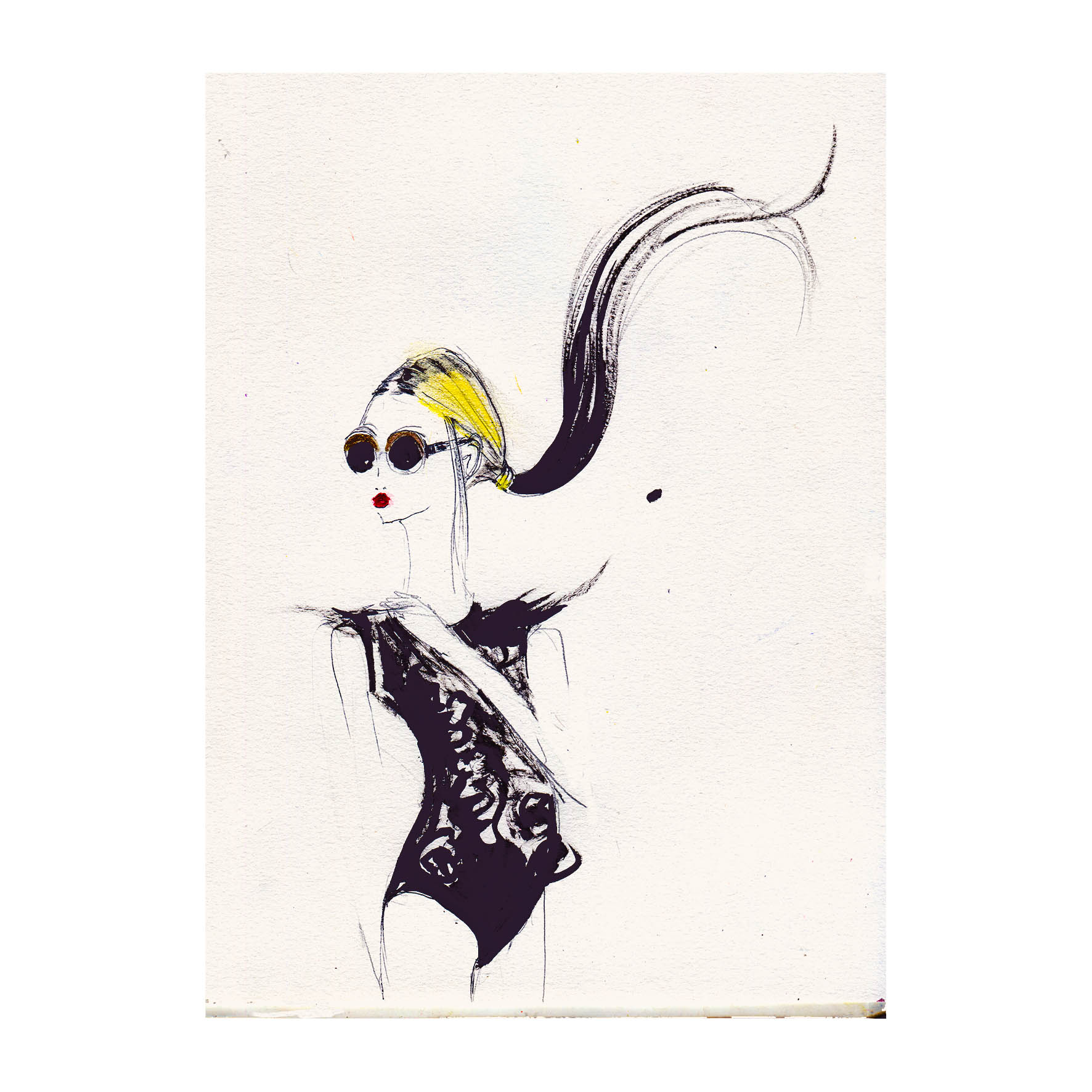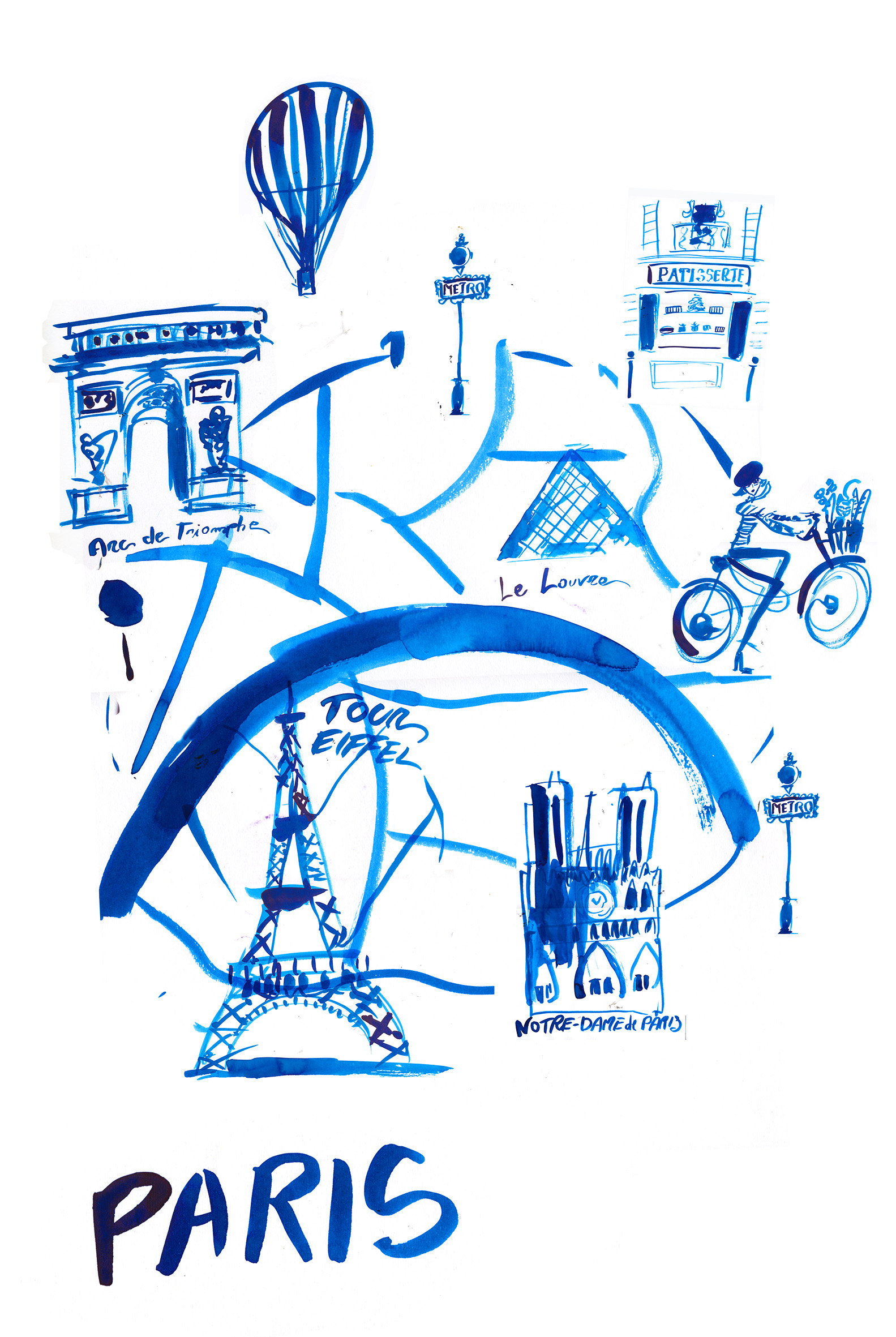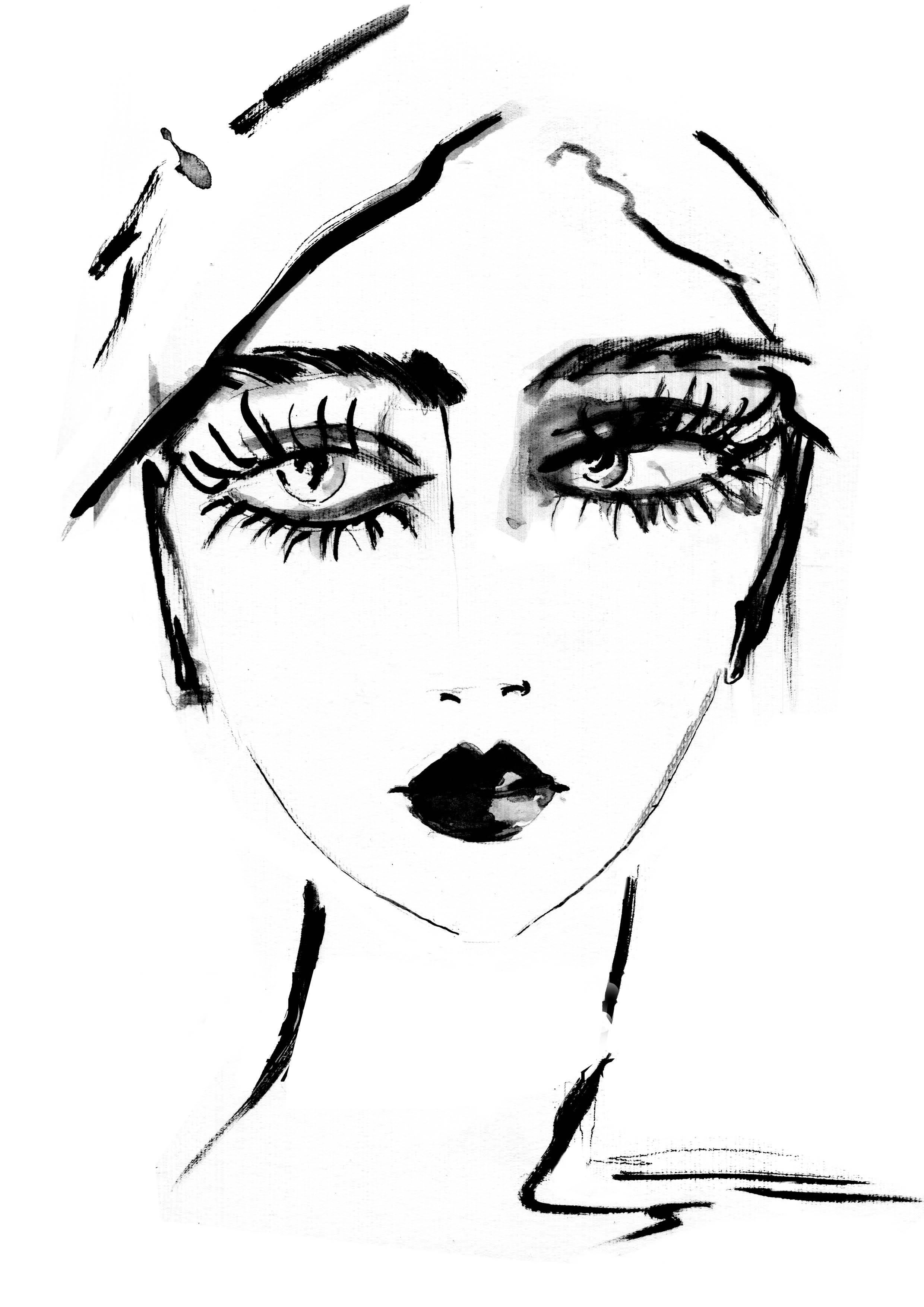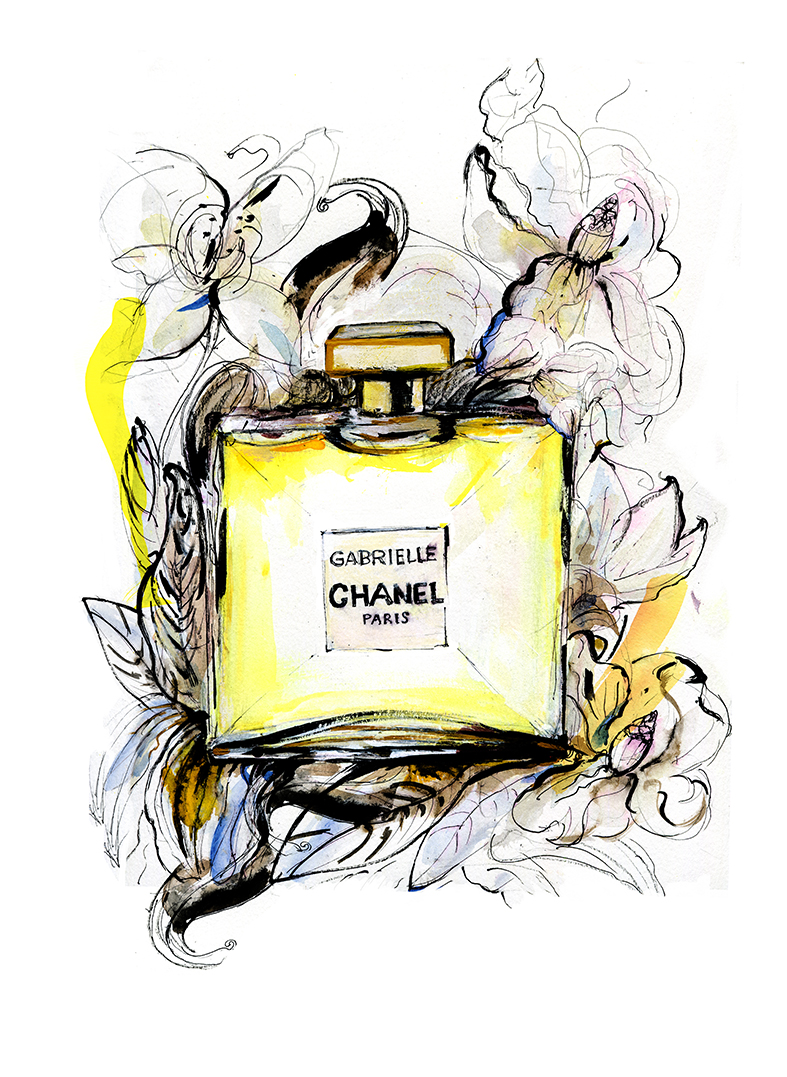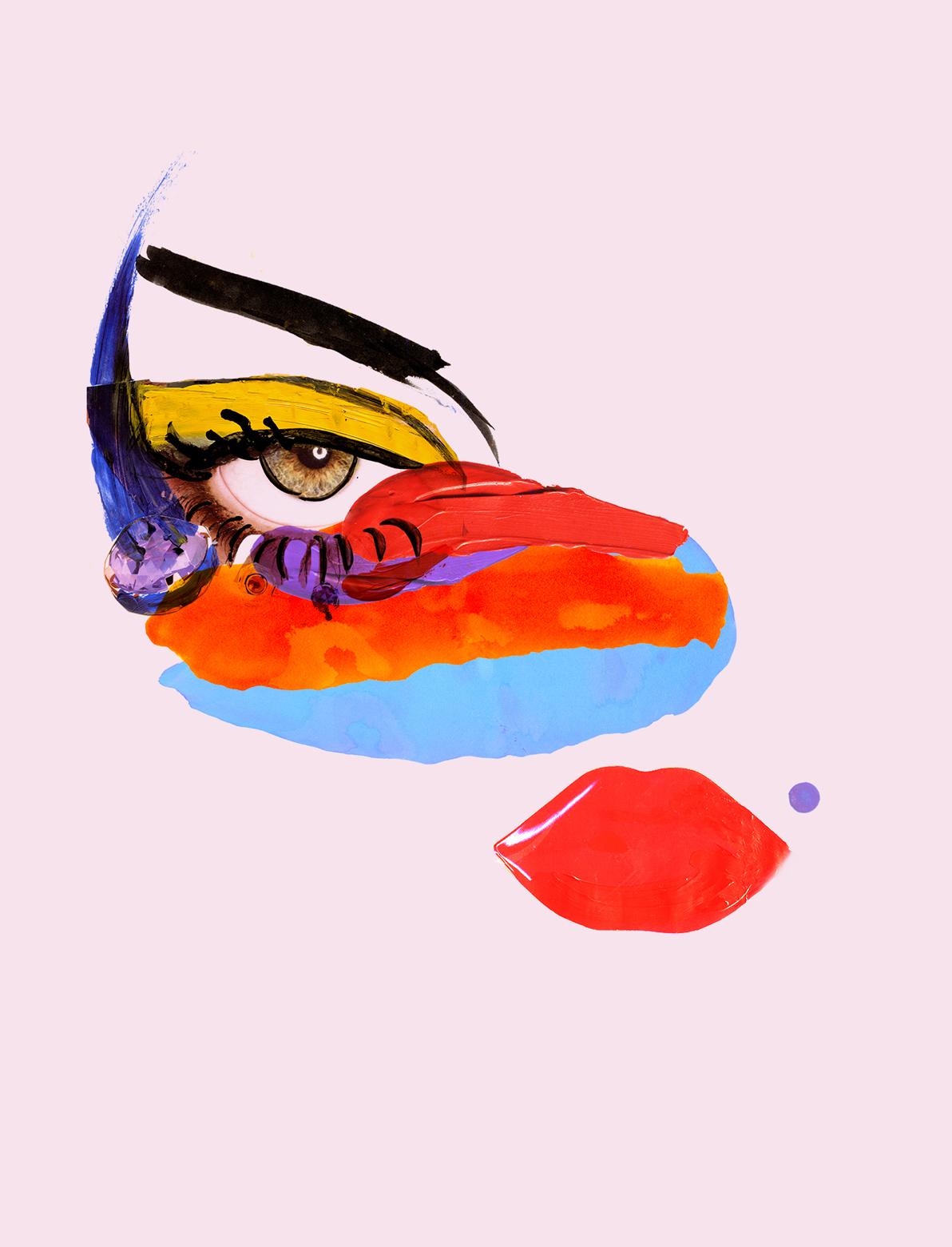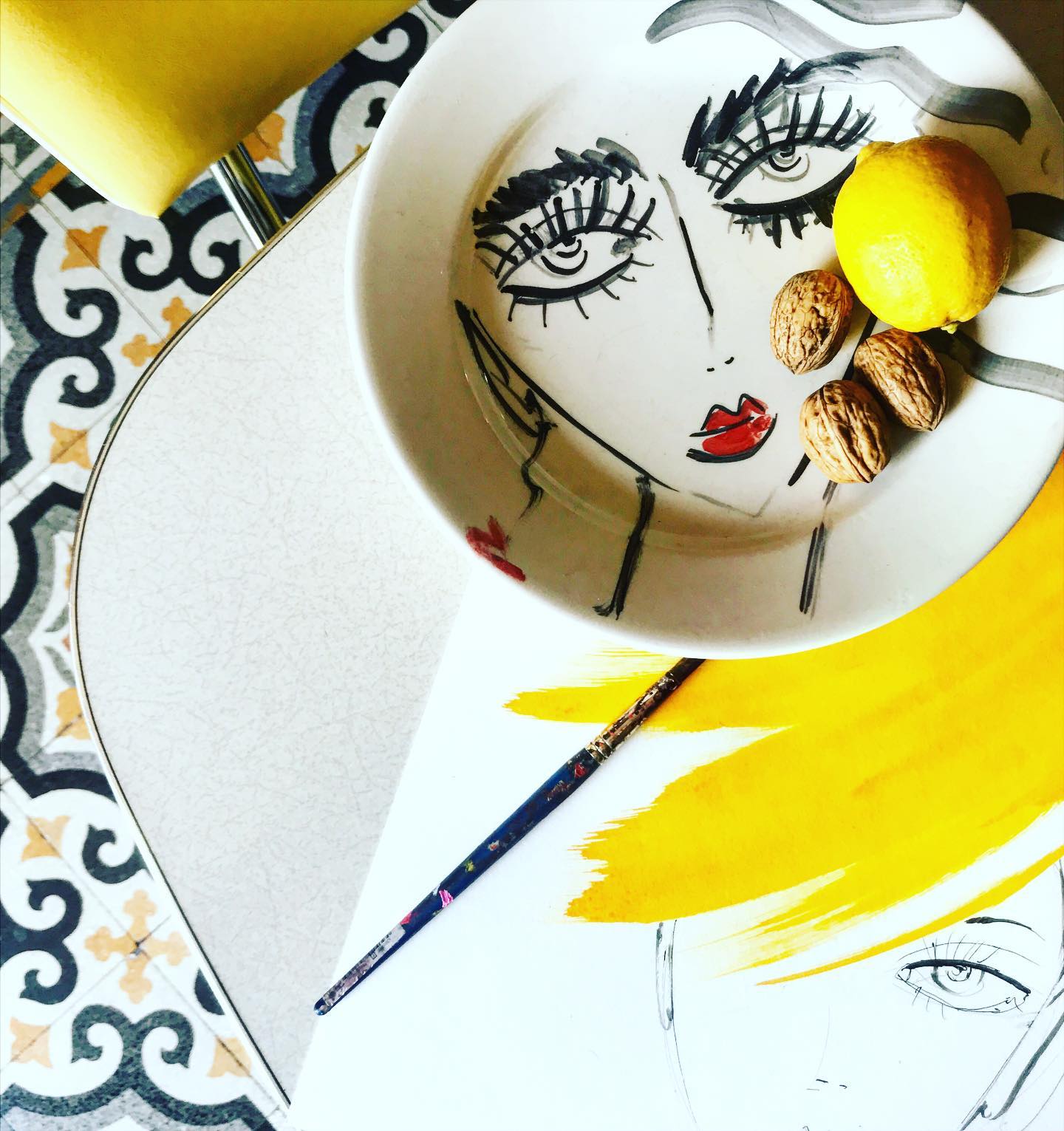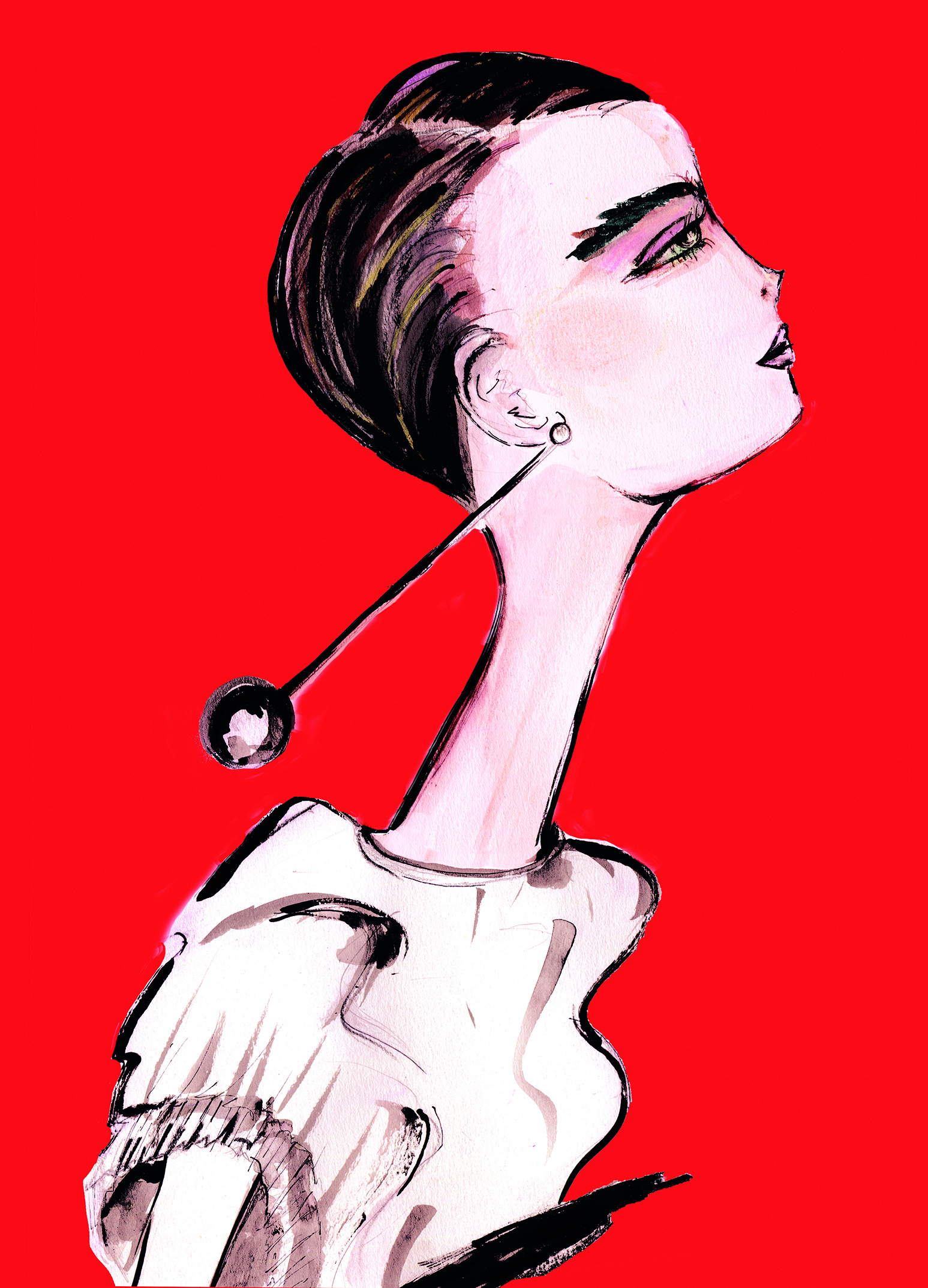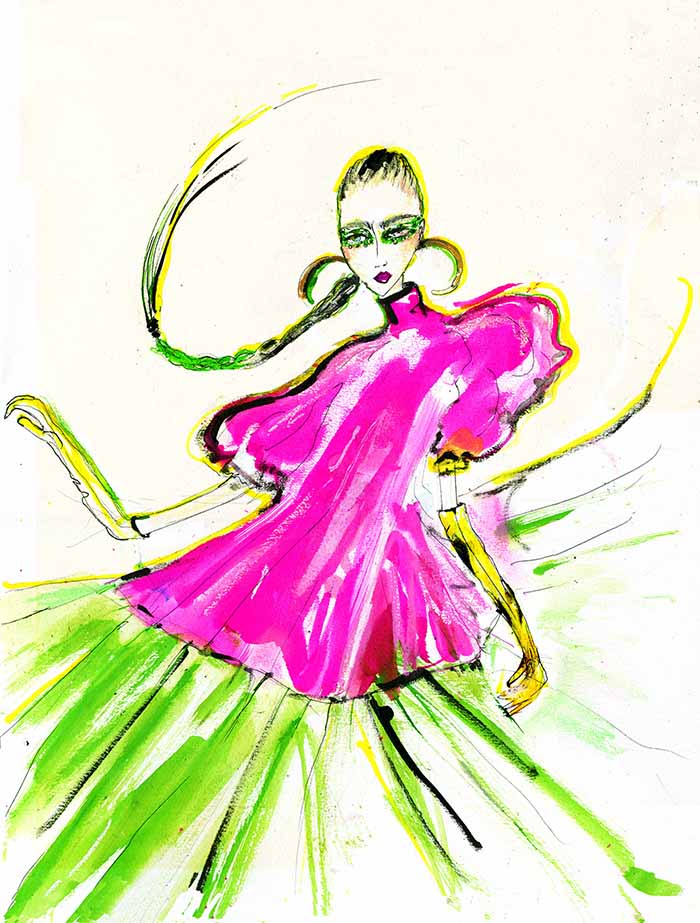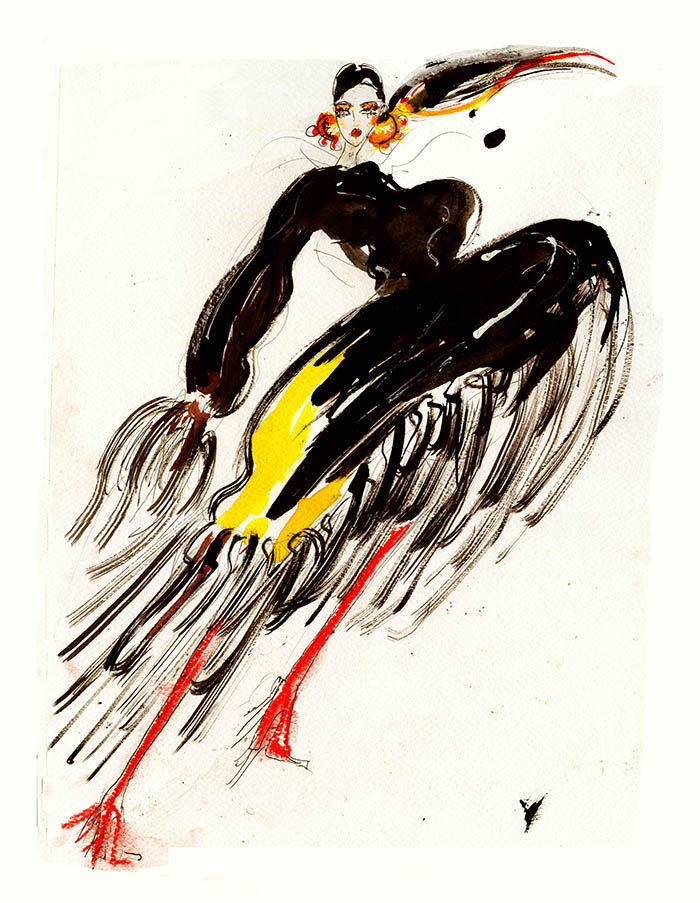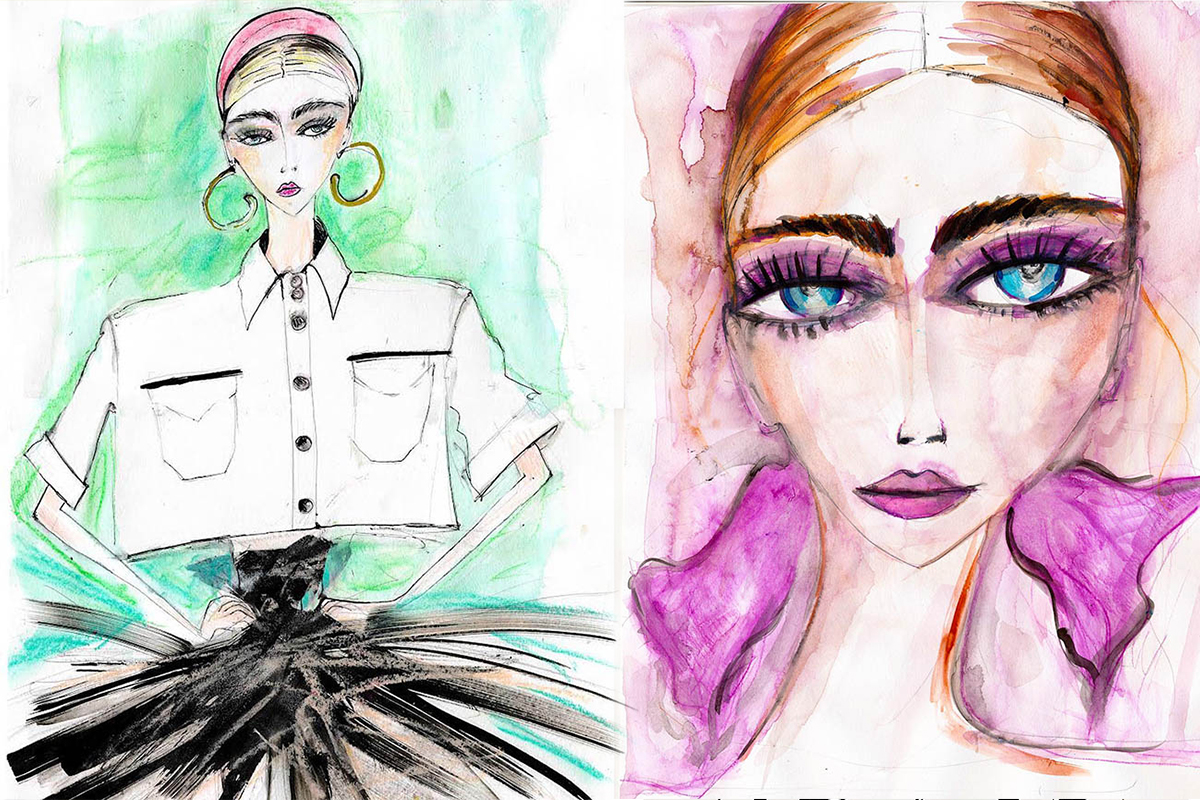Italian-born Lucia Emanuela Curzi has made an impressive career as a fashion and beauty artist for luxury brands, with a focus on editorial, advertising, and art direction. In Curzi’s handmade drawings, fearless black ink marks, graceful lines, and vivid splashes of color come together as an elegant visualization of something exquisite. We were curious about how the artist’s uniquely individual style came to be, and how she’s built a career in such a niche section of the illustration world. So we were delighted when she gave us some of her time by telling her story in her own words.
We know the story of your career from the beginning to now is an interesting one. Can you tell us how it all started, and how you found your place in the world of fashion art illustration?
I got my degree in Film and Media Design in Milan and before graduating I started my career in the advertising industry working in-house for a production company. Four years later I quit the job and moved to London where I specialized in Fashion Illustration. I had a stable job and income in Milan but somehow I felt that I should have risked everything and follow my instincts.
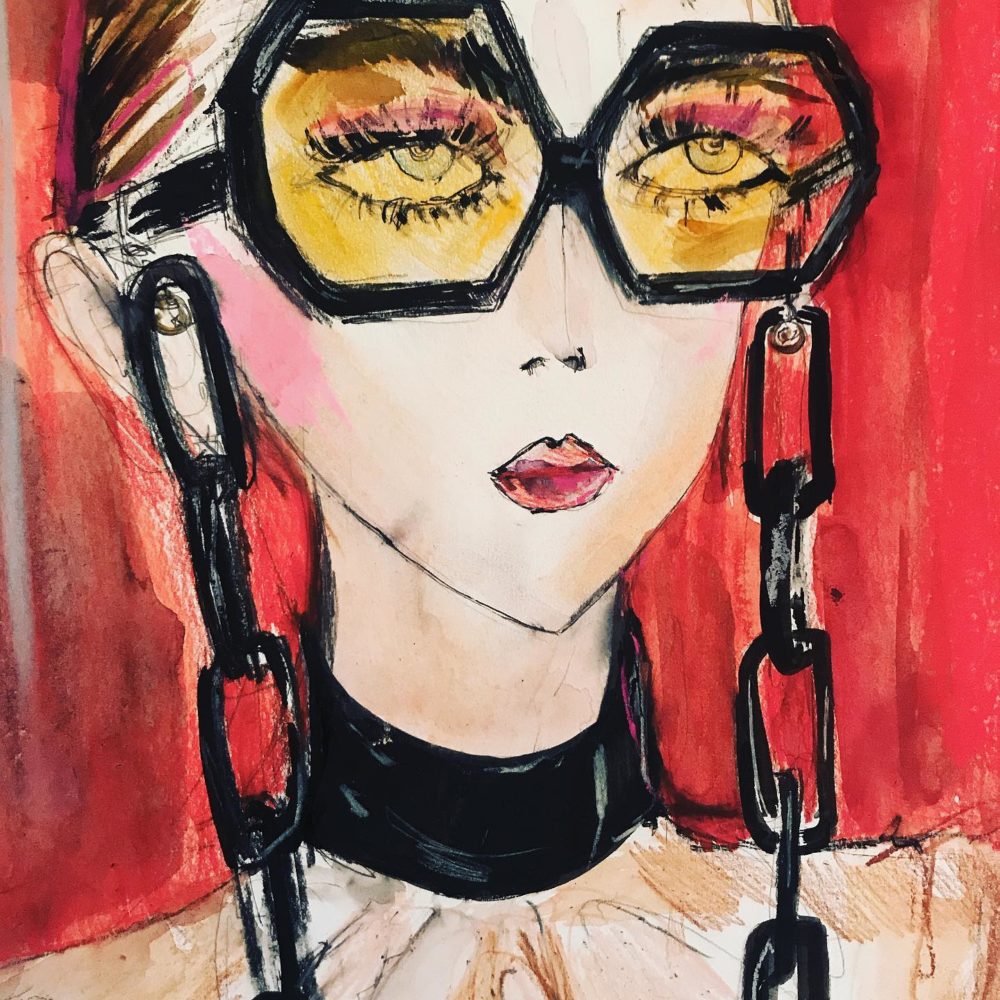
I knew that I could develop the drawing skills that I had since I was a kid and that I never fully explored, and perfectly merge my love for fashion and art into illustration as an art form.
While walking through shelves of art books in a bookstore I had a life-changing intuition when I fell in love with a publication on the history of fashion illustration: I knew that I could develop the drawing skills that I had since I was a kid and that I never fully explored, and perfectly merge my love for fashion and art into illustration as an art form.
In one year only, while attending evening courses at The London College of Fashion I created a portfolio. And just ten months after I had moved to London, I had one of my illustrations hung in a collective exhibition at The V&A Museum. Then I started to collaborate with independent fashion magazines and designers. The year after I won the competition as Best Fashion Illustrator for Company Magazine run by Hearst Magazine to illustrate the September issue. This opportunity enabled me to start my career as an editorial illustrator collecting more than 50 publications in the coming years of magazines such as InStyle and Vogue. That’s pretty much how I got into fashion illustration and how I started.
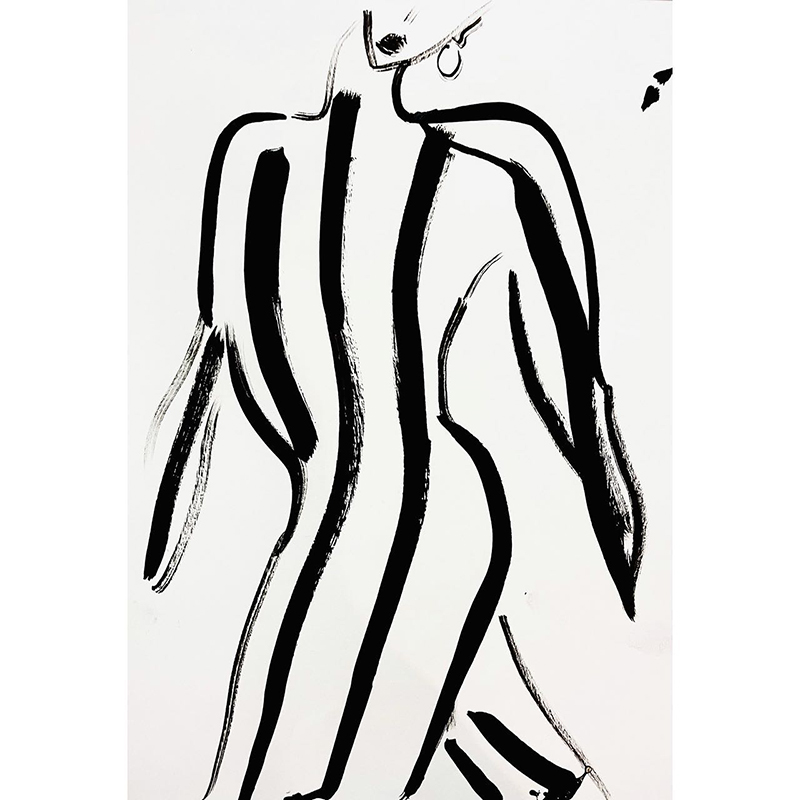
We believe a huge part of your success comes from the originality of your style and your exquisite eye for detail and portions. How did you develop this trademark style of drawing?
During the training at the London College of Fashion, I learned how to put under control the instinctive method that I used to colour, and how to simplify the style that I already had developed, by taking off some unnecessary lines, by naturally following the gestures, and by balancing the colours.
I learned how to put under control the instinctive method that I used to colour, and how to simplify the style that I already had developed, by taking off some unnecessary lines, by naturally following the gestures, and by balancing the colours.
For being essentially a self-taught and trained artist I don’t really feel comfortable following the traditional rules of painting techniques. Live drawing sessions were a huge part of my training too, they allowed me to spend one entire year drawing every day every single part of a human body until I was confident enough to create my own version of each part. In the beginning, I was looking at surrealist and dreamy elements to evoke a fair world distinct feel.
Where do you find the inspiration for your work? Are there specific mediums, artists, movements you research more than others?
I do constantly look for inspiration through Art and Fashion; street style in London is also a huge source of inspiration as well as visual artists and photographers from the past century to the present. I do most of my research on books though, I love spotting new publications while visiting art exhibitions.
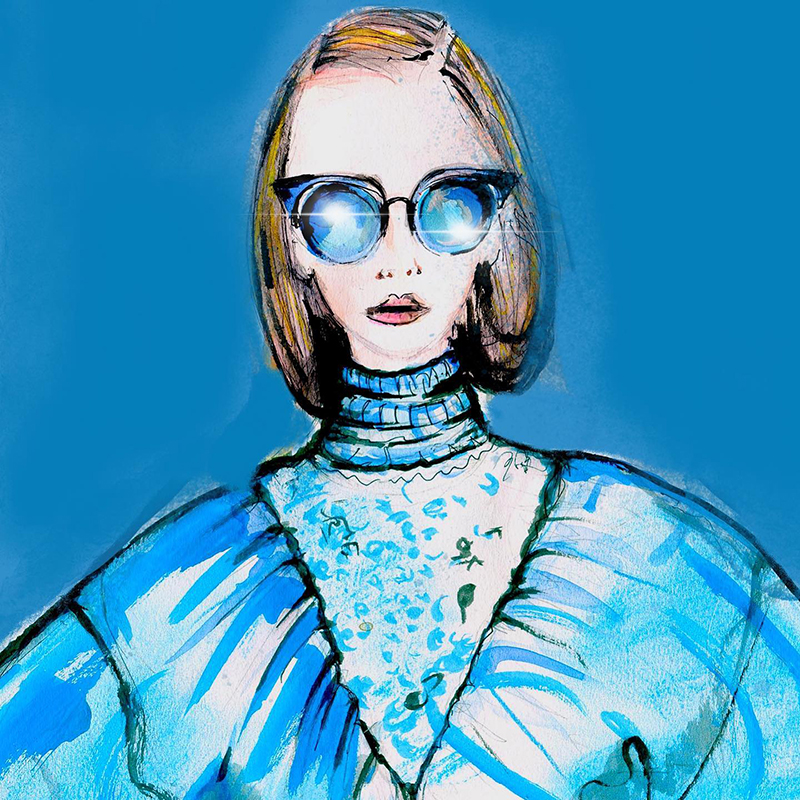
I am very intrigued by the synthesis represented by the thin lines that wonderful botanical photographers like Karl Blossfeldt found through their prints in the past. My formal research focuses aesthetically on strong shapes, colours, and the economy of lines. I love looking at the exaggerations and extravagance of such fashion designers like Jean Paul Gaultier, Viktor & Rolf, and Galliano; I love drowning into the visionary worlds of fashion photographers like Guy Bourdin and wandering around pop elements of painters like Tom Wesselman. I often look at the aesthetic research of contemporary photographers like the colour composition of Vivian Sassen and the abstract shapes of American Abstract Masters like Rothko.
Black ink has been an essential part of my signature style over the years and I used that to highlight the thicker lines of my figures in contrast with the finest lines of some details.
Because of my distinctive use of black, looking back at such Japanese masters of ink like Hokusai was part of my study of course. The paints and the tools that are part of my work are the results of my research too: I do experiment with different textures of acrylics, radiant concentrated watercolours, and pastels as I love working with different mediums and mixing them. Black ink has been an essential part of my signature style over the years and I used that to highlight the thicker lines of my figures in contrast with the finest lines of some details. The research of the exact grain of the paper, the one that is able to absorb the right amount of ink, to deal with the changing pressure of the hand and with the consistency of colours is the starting point of my practice.
The research of the exact grain of the paper, the one that is able to absorb the right amount of ink, to deal with the changing pressure of the hand and with the consistency of colours is the starting point of my practice.
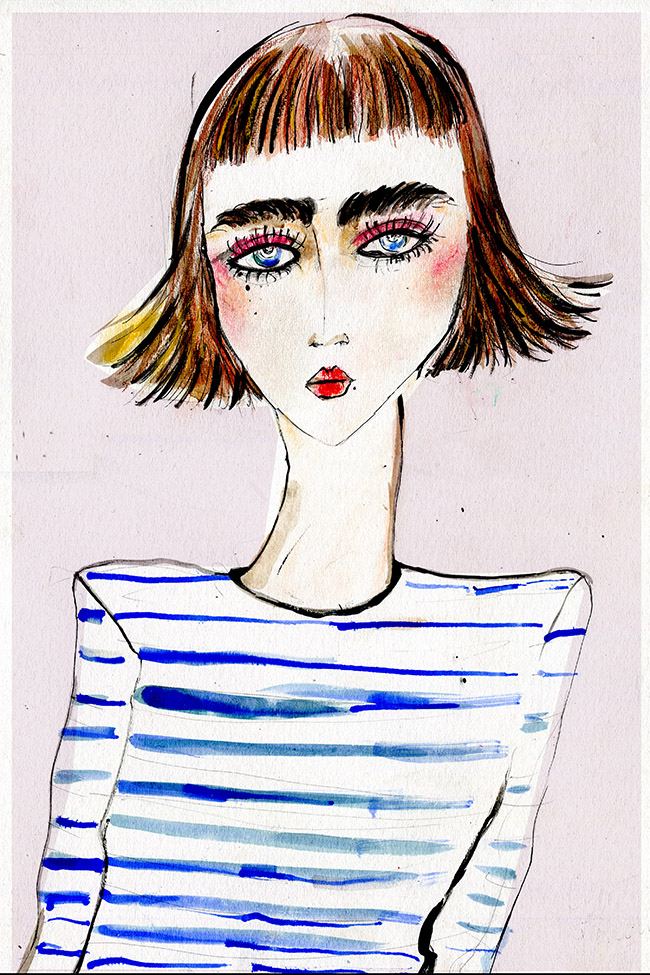
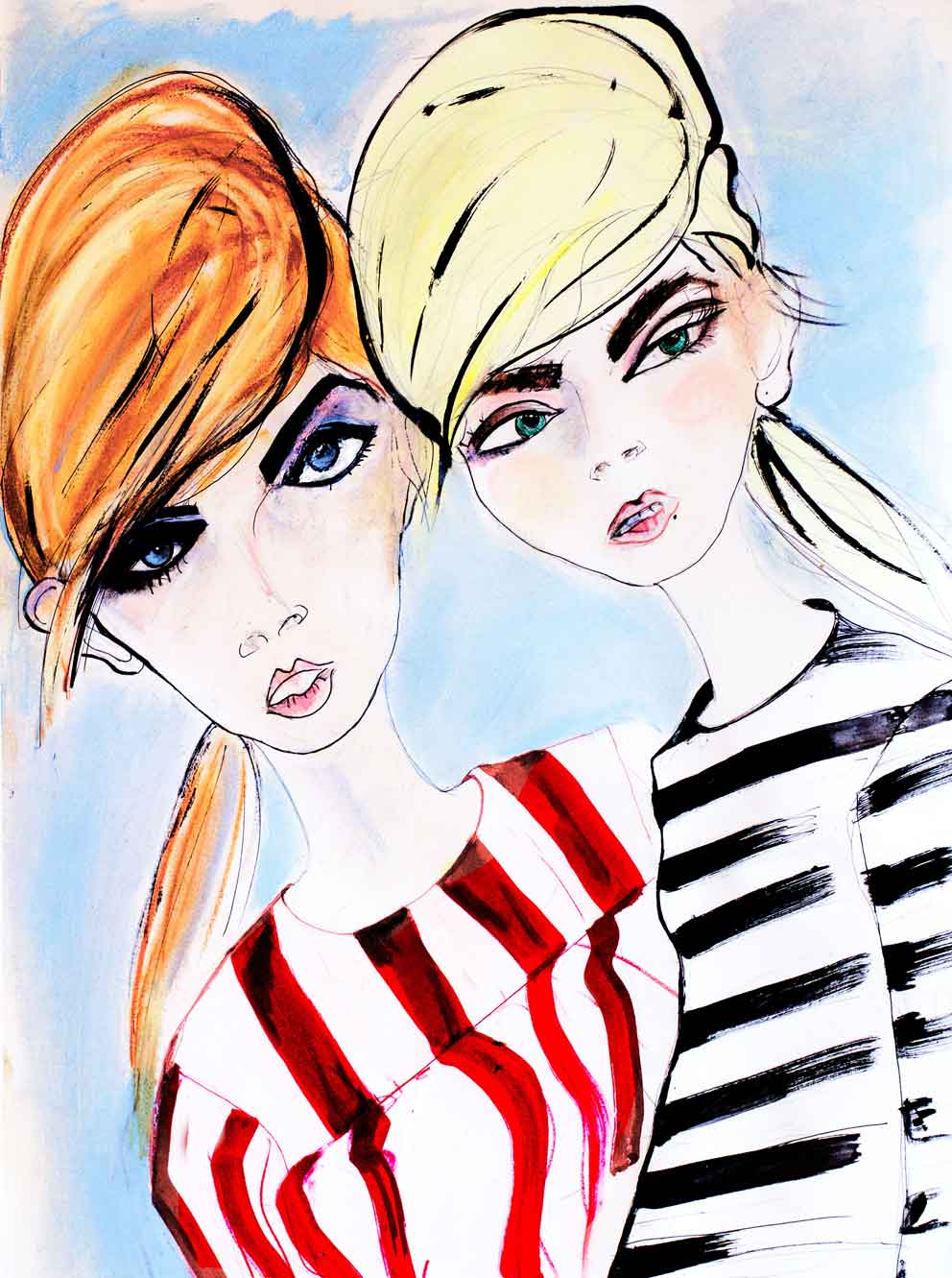
Do you work on personal projects in addition to the commissioned client work? And how do these two aspects relate to each other?
Working on my portfolio and on a series of personal projects is an essential part of my identity as a visual artist and fashion illustrator; I might say that often commissioned works are the mirror of concepts and ideas that start taking shape while freely working on personal projects. It is also true that thanks to a personal project around such a different media as ceramics painting landed me a commission from Laura Mercier for a custom-made ceramic collaboration.
I’ll never prevent myself from learning something new, and that’s also why I constantly work on my style and improve its details and nuances, which enabled me to work for over 14 years as a Fashion Illustrator in the fashion industry.
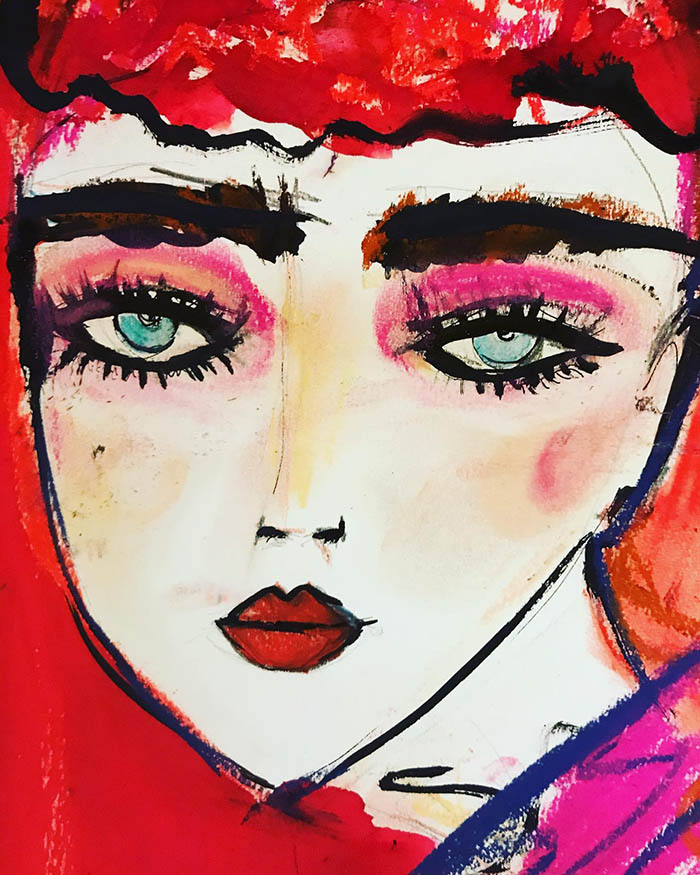 The research is endless, I’ll never prevent myself from learning something new, and that’s also why I constantly work on my style and improve its details and nuances, which enabled me to work for over 14 years as a Fashion Illustrator in the fashion industry. Especially now, because of the latest exceptional events, the acceleration of social media, and the huge transformations brought by the new spaces and narratives offered by the Metaverse, trends change at an incredible speed and the work of a fashion illustrator has to find different ways to stay relevant in terms of themes, contents and visual impact.
The research is endless, I’ll never prevent myself from learning something new, and that’s also why I constantly work on my style and improve its details and nuances, which enabled me to work for over 14 years as a Fashion Illustrator in the fashion industry. Especially now, because of the latest exceptional events, the acceleration of social media, and the huge transformations brought by the new spaces and narratives offered by the Metaverse, trends change at an incredible speed and the work of a fashion illustrator has to find different ways to stay relevant in terms of themes, contents and visual impact.
Personal projects are always a drive for experimentation and innovation as well as exploring new mediums and learning new techniques is a way to express my vision, style, and colours in a new and different way. I don’t mind leaving my comfort zone and developing new skills, and that’s why I’ve been recently challenging myself to learn ceramic painting and screen printing, in fact, these days I’m working on a new series of screenprints.
All of these projects and their versatility sounds very interesting. What does a typical workday look like for you, if there is one?
Generally, I start my day going through some newspapers and magazines while having a healthy breakfast, then I check my emails and answer the urgent ones. I have to-do lists that help me organise the tasks of the day and the goals of the week. Then I head to my studio, a warehouse in Dalston that I share with other artists, and when I’m there I am in my most creative space, drawing or working on a series of commissioned and personal projects. Being a freelance artist though also means taking on a variety of different tasks that involve less drawing and more typing on your computer, such things as keeping my network updated, editing my work, or creating content for social media purposes.
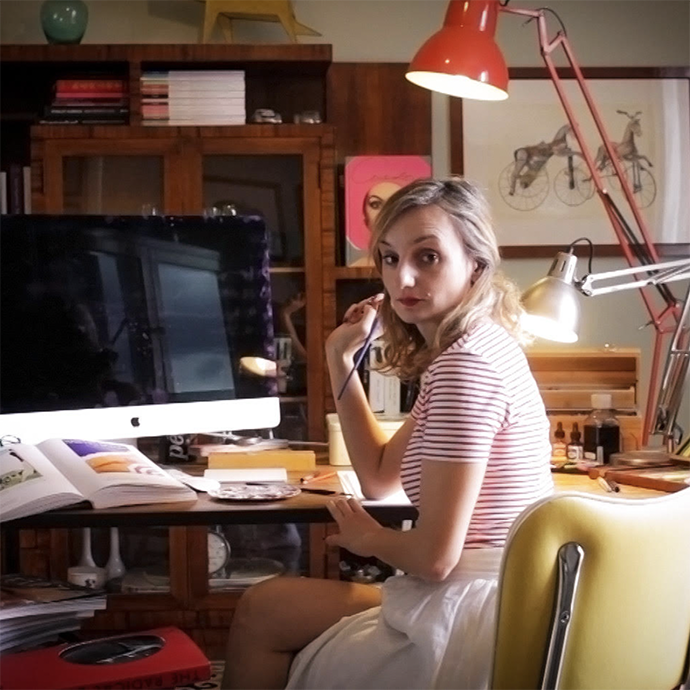
Then I head to my studio, a warehouse in Dalston that I share with other artists, and when I’m there I am in my most creative space, drawing or working on a series of commissioned and personal projects.
I love living in big cities like London where there is always something exciting happening and as looking for inspiration around myself is part of my work, it is also part of my daily routine enjoying art events, exploring new art spaces, watching new movies at film festivals or swinging by music and audio-visual gigs around the city. Meeting new people and friends is part of who I am as a creative too. Every other day I also like joining a pilates lesson, but that has less to do with work. Over the last few years, I have also spent months working in Milan, where I usually end every working day going out with friends and attending art and design openings in the city.
And what would be a dream project or client to work for – which you haven’t done yet?
Having achieved some of my dreams in the print medium such as editorial collaborations with Harper’s Bazaar and Vogue, I would love to experiment more with other mediums like fashion prints. I would also love to collaborate with a fashion designer on a runway collection or to create an interior design collection of artifacts; and because I love ballet, something that I often wonder is how my work could expand my vision on the stage of a theatrical performance or ballet.
Thank you so much for taking the time to talk to us. We’re huge fans of your work and will keep a keen eye on upcoming projects. For our readers, make sure to follow Curzi on Instagram for future fashion art illustration inspiration.

